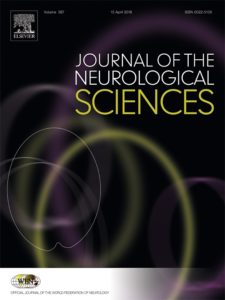OBJECTIVE: We investigated the King-Devick (K–D) test of rapid number naming as a visual performance measure in a cohort of patients with multiple sclerosis (MS).
METHODS: In this cross-sectional study, 81 patients with MS and 20 disease-free controls from an ongoing study of visual outcomes underwent K-D testing. A test of rapid number naming, K-D requires saccadic eye movements as well as intact vision, attention and concentration. To perform the K-D test, participants are asked to read numbers aloud as quickly as possible from three test cards; the sum of the three test card times in seconds constitutes the summary score. High-contrast visual acuity (VA), low-contrast letter acuity (1.25% and 2.5% levels), retinal nerve fiber layer (RNFL) thickness by optical coherence tomography (OCT), MS Functional Composite (MSFC) and vision-specific quality of life (QOL) measures (25-Item NEI Visual Functioning Questionnaire [NEI-VFQ-25] and 10-Item Neuro-Ophthalmic Supplement) were also assessed.
RESULTS: K-D time scores in the MS cohort (total time to read the three test cards) were significantly higher (worse) compared to those for disease-free controls (P = 0.003, linear regression, accounting for age). Within the MS cohort, higher K-D scores were associated with worse scores for the NEI-VFQ-25 composite (P < 0.001), 10-Item Neuro-Ophthalmic Supplement (P < 0.001), binocular low-contrast acuity (2.5%, 1.25%, P < 0.001, and high-contrast VA (P = 0.003). Monocular low-contrast vision scores (P = 0.001-0.009) and RNFL thickness (P = 0.001) were also reduced in eyes of patients with worse K-D scores (GEE models accounting for age and within-patient, inter-eye correlations). Patients with a history of optic neuritis (ON) had increased (worse) K-D scores. Patients who classified their work disability status as disabled (receiving disability pension) did worse on K-D testing compared to those working full-time (P = 0.001, accounting for age).
CONCLUSIONS: The K-D test, a < 2 minute bedside test of rapid number naming, is associated with visual dysfunction, neurologic impairment, and reduced vision-specific QOL in patients with MS. Scores reflect work disability as well as structural changes as measured by OCT imaging. History of ON and abnormal binocular acuities were associated with worse K-D scores, suggesting that abnormalities detected by K-D may go along with afferent dysfunction in MS patients. A brief test that requires saccadic eye movements, K-D should be considered for future MS trials as a rapid visual performance measure.
Summary Points:
- The K-D Test captures visual dysfunction, vision specific quality of life and neurology impairment in MS.
- K-D scores correlated with work disability and retinal structural changes.
- History of optic neuritis and abnormal binocular visual acuity, common ocular complications of MS, were associated with worse K-D scores.
- Findings support the K-D Test as a rapid visual performance measure for MS trials.

